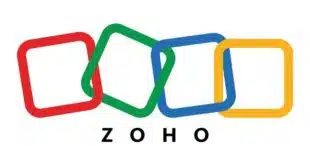n
JPMorgan Chase & Co.’s Chase Card Services unit on Monday launched its third EMV chip card and the first such product to be issued on behalf of an airline partner. The new card is being issued to all new applicants for Chase’s cobranded British Airways card as well as to existing cardholders who request the card. It is promoting the new product with an e-mail campaign to current holders and notices on its Web site.
n
As with Chase’s previous two EMV deployments, the new Visa card will allow cardholders to sign for transactions rather than enter a PIN, which is a far more common form of authentication for EMV in markets like Europe and Canada where the smart card technology has been rolled out.
n
The bank will not say how many BA cards it has in circulation, nor has it made any projections for how many EMV versions it will issue. “We just want to make sure we have the capacity to fulfill 100%” of requests, Ralph Darmo, marketing director for the BA card program at Chase, tells Digital Transactions News. Darmo says Chase is responding to frequent requests from BA cardholders for a chip card they could use overseas, where the technology is more common than in the United States. “There’s a lot of pent-up demand,” he says.
n
Chase, which has issued the cobranded BA card since 1998, says the new chip card is intended for frequent overseas travelers. U.S. travelers to markets such as Western Europe, where EMV has been rolled out, have reported problems from time to time trying to use mag-strip-only cards for transactions. An estimated 1 billion EMV cards have been issued outside the U.S.
n
The bank is issuing the new card as a so-called chip-and-signature card, which means it can be authenticated with a signature, as is the case with mag-stripe transactions, while the chip secures such data as the cardholder’s name and account number. The chip cards will also carry a conventional mag stripe for domestic use. This follows a pattern the bank set earlier in the year with EMV versions of its high-end Palladium and Select cards. Wells Fargo & Co., U.S. Bank, and State Employees Credit Union in North Carolina have also issued EMV chip cards this year, again primarily for travelers. U.S. Bank’s card also features contactless capability.
n
But while most overseas EMV deployments rely on PIN entry rather than signatures, Chase argues signature authentication makes for a smoother transaction for its customers, who are not accustomed to entering PINs with credit cards and who may not always recall a PIN they may use only occasionally. Chase issues its BA card exclusively to U.S. residents.
n
“This is about giving the customer a better experience,” says Darmo. “We wanted to make it a really easy and hassle-free experience. The step to chip-and-PIN is a little bit more of a shock to the experience.” Considerations such as interchange in foreign markets, he says, played no role in the decision. “There’s no difference in interchange to my knowledge,” he says.
n
Observers question, however, how smooth the experience could be in cases where clerks are confused by a customer signing for a transaction rather than entering a PIN. “If you go into an environment where everybody’s expecting a PIN, are they going to know they’re supposed to take [a signature]?” asks Aaron McPherson, practice director for financial services at IDC Financial Insights, Boston. “Are people going to get into fights with checkout clerks?”
n
While signatures are allowed under the EMV standard, McPherson says time will tell whether they will work in practice as more of the Chase and Wells cards enter foreign markets where EMV is established. Wells has said that while its card can support either signature or PIN, it is promoting signature.





